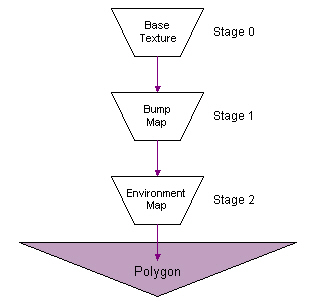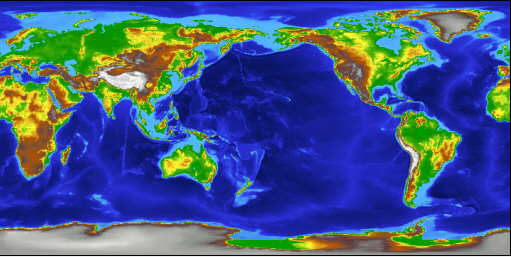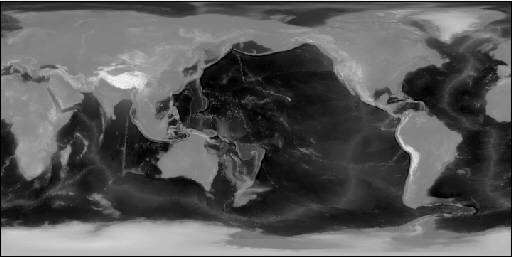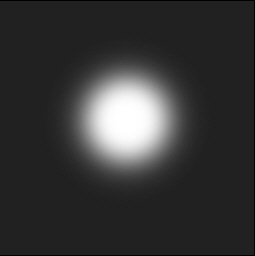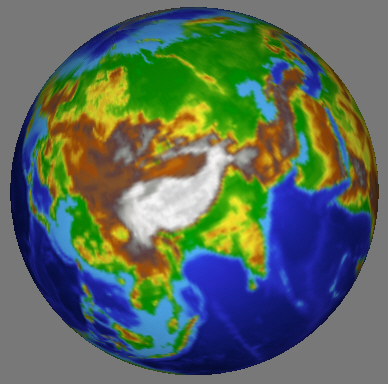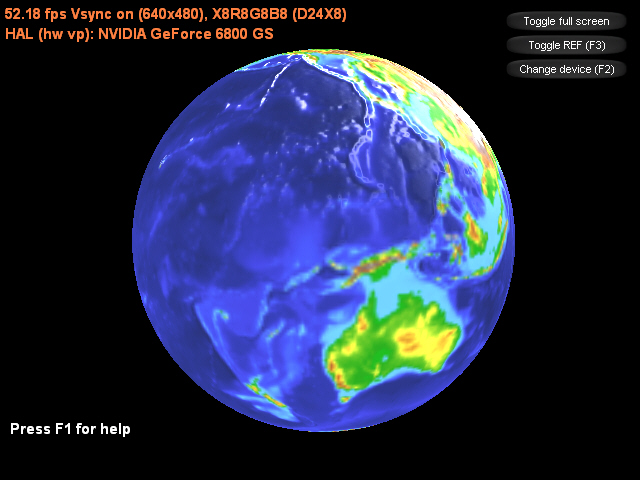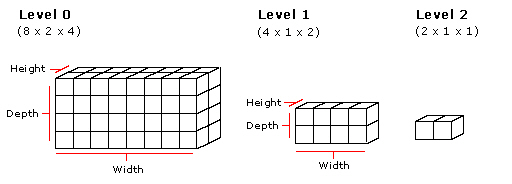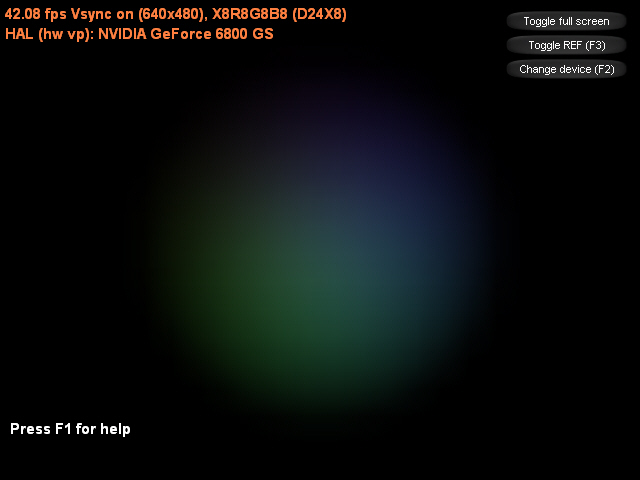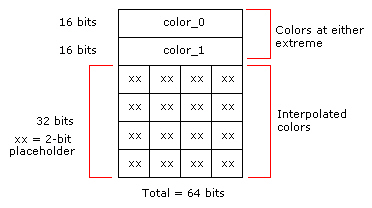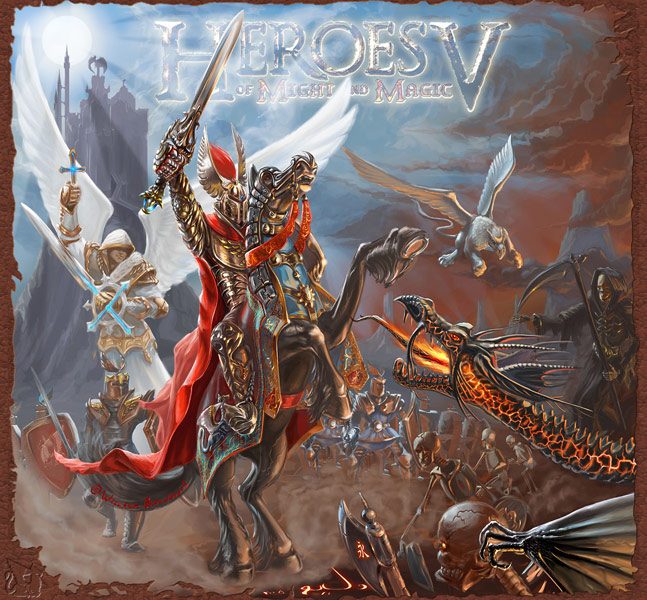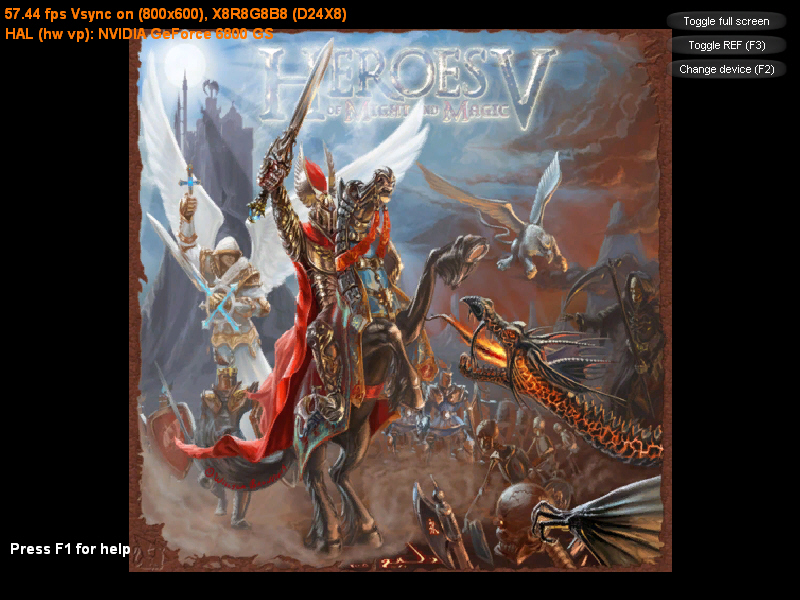-- 作者:卷积内核
-- 发布时间:12/10/2008 8:25:00 AM
--
主程序:
#include "dxstdafx.h"
#include "resource.h" #pragma warning(disable : 4127 4995 4996) #define release_com(p) do { if(p) { (p)->Release(); (p) = NULL; } } while(0) #define IDC_TOGGLE_FULLSCREEN 1
#define IDC_TOGGLE_REF 2
#define IDC_CHANGE_DEVICE 3 const D3DXCOLOR FONT_COLOR(1.0f, 0.5f, 0.25f, 1.0f); ID3DXFont* g_font;
ID3DXSprite* g_text_sprite;
bool g_show_help; CDXUTDialogResourceManager g_dlg_resource_manager;
CD3DSettingsDlg g_settings_dlg;
CDXUTDialog g_button_dlg; ID3DXMesh* g_mesh;
D3DMATERIAL9* g_mesh_materials;
IDirect3DTexture9** g_mesh_textures;
DWORD g_num_materials; IDirect3DTexture9* g_env_map_texture;
IDirect3DTexture9* g_height_map_texture;
IDirect3DTexture9* g_bump_map_texture; inline DWORD F2DW(float f) { return *((DWORD*) &f); } //--------------------------------------------------------------------------------------
// Rejects any devices that aren't acceptable by returning false
//--------------------------------------------------------------------------------------
bool CALLBACK IsDeviceAcceptable( D3DCAPS9* pCaps, D3DFORMAT AdapterFormat,
D3DFORMAT BackBufferFormat, bool bWindowed, void* pUserContext )
{
// Typically want to skip backbuffer formats that don't support alpha blending IDirect3D9* pD3D = DXUTGetD3DObject(); if( FAILED( pD3D->CheckDeviceFormat( pCaps->AdapterOrdinal, pCaps->DeviceType, AdapterFormat,
D3DUSAGE_QUERY_POSTPIXELSHADER_BLENDING, D3DRTYPE_TEXTURE, BackBufferFormat ) ) )
return false; // check whether device support bump textue mapping
if((pCaps->TextureOpCaps & (D3DTEXOPCAPS_BUMPENVMAP | D3DTEXOPCAPS_BUMPENVMAPLUMINANCE)) == 0)
return false; // check whether device support 3 level texture stage blend
if(pCaps->MaxTextureBlendStages < 3)
return false; return true;
}
//--------------------------------------------------------------------------------------
// Before a device is created, modify the device settings as needed.
//--------------------------------------------------------------------------------------
bool CALLBACK ModifyDeviceSettings( DXUTDeviceSettings* pDeviceSettings, const D3DCAPS9* pCaps, void* pUserContext )
{
// If video card does not support hardware vertex processing, then uses sofaware vertex processing.
if((pCaps->DevCaps & D3DDEVCAPS_HWTRANSFORMANDLIGHT) == 0)
pDeviceSettings->BehaviorFlags = D3DCREATE_SOFTWARE_VERTEXPROCESSING; static bool is_first_time = true; if(is_first_time)
{
is_first_time = false; // if using reference device, then pop a warning message box.
if(pDeviceSettings->DeviceType == D3DDEVTYPE_REF)
DXUTDisplaySwitchingToREFWarning();
} return true;
} //--------------------------------------------------------------------------------------
// Create bump texture from height map texture.
//--------------------------------------------------------------------------------------
HRESULT CreateBumpTexture(IDirect3DDevice9* device)
{
HRESULT hr; D3DSURFACE_DESC surface_desc;
g_height_map_texture->GetLevelDesc(0, &surface_desc); V_RETURN(device->CreateTexture(surface_desc.Width, surface_desc.Height, 1, 0, D3DFMT_X8L8V8U8, D3DPOOL_MANAGED,
&g_bump_map_texture, NULL));
D3DLOCKED_RECT locked_rect;
g_height_map_texture->LockRect(0, &locked_rect, NULL, 0); DWORD src_pitch = (DWORD) locked_rect.Pitch;
BYTE* src_row_top = (BYTE*) locked_rect.pBits;
BYTE* src_row_cur = src_row_top;
BYTE* src_row_bot = src_row_top + src_pitch * (surface_desc.Height - 1); g_bump_map_texture->LockRect(0, &locked_rect, NULL, 0); DWORD dest_pitch = (DWORD) locked_rect.Pitch;
BYTE* dest_row_top = (BYTE*) locked_rect.pBits;
BYTE* dest_row_cur = dest_row_top; // iterate through all lines
for(DWORD y = 0; y < surface_desc.Height; y++)
{
BYTE* src_pixel_cur;
BYTE* src_pixel_up;
BYTE* src_pixel_below;
BYTE* dest_pixel; src_pixel_cur = src_row_cur; if(y == 0)
src_pixel_up = src_row_bot;
else
src_pixel_up = src_row_cur - src_pitch; if(y == surface_desc.Height - 1)
src_pixel_below = src_row_top;
else
src_pixel_below = src_row_cur + src_pitch; dest_pixel = dest_row_cur; // iterate through all columns in current line
for(DWORD x = 0; x < surface_desc.Width; x++)
{
BYTE src_pixel_left, src_pixel_right; if(x == 0)
src_pixel_left = *(src_row_cur + (surface_desc.Width - 4));
else
src_pixel_left = *(src_pixel_cur - 4); if(x == surface_desc.Width - 1)
src_pixel_right = *src_row_cur;
else
src_pixel_right = *(src_pixel_cur + 4); BYTE du = BYTE(src_pixel_left - src_pixel_right);
BYTE dv = BYTE(src_pixel_up - src_pixel_below); // the luminance bump value
BYTE u_lumi = (*src_pixel_cur > 1) ? 63 : 127; *dest_pixel++ = du;
*dest_pixel++ = dv;
*dest_pixel++ = u_lumi;
*dest_pixel++ = 0; // move one pixel to the right
src_pixel_cur += 4;
src_pixel_up += 4;
src_pixel_below += 4;
} // move to the next line
src_row_cur += src_pitch;
dest_row_cur += dest_pitch;
} g_bump_map_texture->UnlockRect(0);
g_height_map_texture->UnlockRect(0); return S_OK;
} //--------------------------------------------------------------------------------------
// Remove path from fullname, and convert filename from multibyte to wchar.
//--------------------------------------------------------------------------------------
void RemovePathFromFileName(LPSTR fullname, LPWSTR wfilename)
{
WCHAR wbuf[MAX_PATH] = {0};
MultiByteToWideChar(CP_ACP, 0, fullname, -1, wbuf, MAX_PATH); LPWSTR w_last_back_slash = wcsrchr(wbuf, '\\'); if(w_last_back_slash)
lstrcpy(wfilename, ++w_last_back_slash);
else
lstrcpy(wfilename, wbuf);
} //--------------------------------------------------------------------------------------
// Create any D3DPOOL_MANAGED resources here
//--------------------------------------------------------------------------------------
HRESULT CALLBACK OnCreateDevice( IDirect3DDevice9* pd3dDevice,
const D3DSURFACE_DESC* pBackBufferSurfaceDesc,
void* pUserContext )
{
HRESULT hr; V_RETURN(g_dlg_resource_manager.OnCreateDevice(pd3dDevice));
V_RETURN(g_settings_dlg.OnCreateDevice(pd3dDevice)); D3DXCreateFont(pd3dDevice, 18, 0, FW_BOLD, 1, FALSE, DEFAULT_CHARSET, OUT_DEFAULT_PRECIS, DEFAULT_QUALITY,
DEFAULT_PITCH | FF_DONTCARE, L"Arial", &g_font); V_RETURN(D3DXCreateTextureFromFile(pd3dDevice, L"HeightMap.bmp", &g_height_map_texture));
V_RETURN(D3DXCreateTextureFromFile(pd3dDevice, L"EnvMap.bmp", &g_env_map_texture));
V_RETURN(CreateBumpTexture(pd3dDevice));
ID3DXBuffer* material_buffer; V_RETURN(D3DXLoadMeshFromXW(L"SphereEarth.x", D3DXMESH_MANAGED, pd3dDevice, NULL, &material_buffer, NULL,
&g_num_materials, &g_mesh)); D3DXMATERIAL* xmaterials = (D3DXMATERIAL*) material_buffer->GetBufferPointer();
g_mesh_materials = new D3DMATERIAL9[g_num_materials];
g_mesh_textures = new IDirect3DTexture9*[g_num_materials]; for(DWORD i = 0; i < g_num_materials; i++)
{
g_mesh_materials[i] = xmaterials[i].MatD3D; // .x file do not save ambient data, so set it here.
g_mesh_materials[i].Ambient = g_mesh_materials[i].Diffuse; WCHAR wfilename[MAX_PATH];
RemovePathFromFileName(xmaterials[i].pTextureFilename, wfilename); g_mesh_textures[i] = NULL; if(xmaterials[i].pTextureFilename != NULL && lstrlen(wfilename) > 0)
V_RETURN(D3DXCreateTextureFromFile(pd3dDevice, wfilename, &g_mesh_textures[i]));
} material_buffer->Release(); return S_OK;
}
//--------------------------------------------------------------------------------------
// Create any D3DPOOL_DEFAULT resources here
//--------------------------------------------------------------------------------------
HRESULT CALLBACK OnResetDevice( IDirect3DDevice9* pd3dDevice,
const D3DSURFACE_DESC* pBackBufferSurfaceDesc,
void* pUserContext )
{
HRESULT hr; V_RETURN(g_dlg_resource_manager.OnResetDevice());
V_RETURN(g_settings_dlg.OnResetDevice());
V_RETURN(g_font->OnResetDevice());
V_RETURN(D3DXCreateSprite(pd3dDevice, &g_text_sprite)); // set dialog position and size g_button_dlg.SetLocation(pBackBufferSurfaceDesc->Width - 170, 0);
g_button_dlg.SetSize(170, 170); // setup view matrix D3DXMATRIX mat_view;
D3DXVECTOR3 eye(0.0f, -3.0f, 0.0f);
D3DXVECTOR3 at(0.0f, 0.0f, 0.0f);
D3DXVECTOR3 up(0.0f, 0.0f, 1.0f); D3DXMatrixLookAtLH(&mat_view, &eye, &at, &up);
pd3dDevice->SetTransform(D3DTS_VIEW, &mat_view); // set projection matrix
D3DXMATRIX mat_proj;
float aspect = (float)pBackBufferSurfaceDesc->Width / pBackBufferSurfaceDesc->Height;
D3DXMatrixPerspectiveFovLH(&mat_proj, D3DX_PI/4, aspect, 1.0f, 1000.0f);
pd3dDevice->SetTransform(D3DTS_PROJECTION, &mat_proj); // set texture color blend method for stage 0 (base texture)
pd3dDevice->SetTextureStageState(0, D3DTSS_COLORARG1, D3DTA_TEXTURE);
pd3dDevice->SetTextureStageState(0, D3DTSS_COLOROP, D3DTOP_SELECTARG1);
pd3dDevice->SetSamplerState(0, D3DSAMP_MAGFILTER, D3DTEXF_LINEAR);
pd3dDevice->SetSamplerState(0, D3DSAMP_MINFILTER, D3DTEXF_LINEAR); // set texture color blend method for stage 1 (bump map texture) pd3dDevice->SetTexture(1, g_bump_map_texture); pd3dDevice->SetTextureStageState(1, D3DTSS_TEXCOORDINDEX, 0); pd3dDevice->SetTextureStageState(1, D3DTSS_COLOROP, D3DTOP_BUMPENVMAPLUMINANCE);
pd3dDevice->SetTextureStageState(1, D3DTSS_COLORARG1, D3DTA_TEXTURE);
pd3dDevice->SetTextureStageState(1, D3DTSS_COLORARG2, D3DTA_CURRENT); pd3dDevice->SetTextureStageState(1, D3DTSS_BUMPENVMAT00, F2DW(0.8f));
pd3dDevice->SetTextureStageState(1, D3DTSS_BUMPENVMAT01, F2DW(0.0f));
pd3dDevice->SetTextureStageState(1, D3DTSS_BUMPENVMAT10, F2DW(0.0f));
pd3dDevice->SetTextureStageState(1, D3DTSS_BUMPENVMAT11, F2DW(0.8f)); pd3dDevice->SetTextureStageState(1, D3DTSS_BUMPENVLSCALE, F2DW(4.0f));
pd3dDevice->SetTextureStageState(1, D3DTSS_BUMPENVLOFFSET, F2DW(0.0f)); pd3dDevice->SetSamplerState(1, D3DSAMP_MAGFILTER, D3DTEXF_LINEAR);
pd3dDevice->SetSamplerState(1, D3DSAMP_MINFILTER, D3DTEXF_LINEAR); // set texture color blend method for stage 2 (environment map texture) D3DXMATRIX mat; mat._11 = 0.5f; mat._12 = 0.0f; mat._13 = 0.0f; mat._14 = 0.0f;
mat._21 = 0.0f; mat._22 = -0.5f; mat._23 = 0.0f; mat._24 = 0.0f;
mat._31 = 0.0f; mat._32 = 0.0f; mat._33 = 1.0f; mat._34 = 0.0f;
mat._41 = 0.5f; mat._42 = 0.5f; mat._43 = 0.0f; mat._44 = 1.0f; pd3dDevice->SetTransform(D3DTS_TEXTURE2, &mat); pd3dDevice->SetTexture(2, g_env_map_texture); pd3dDevice->SetTextureStageState(2, D3DTSS_TEXTURETRANSFORMFLAGS, D3DTTFF_COUNT2);
pd3dDevice->SetTextureStageState(2, D3DTSS_TEXCOORDINDEX, D3DTSS_TCI_SPHEREMAP);
pd3dDevice->SetTextureStageState(2, D3DTSS_COLORARG1, D3DTA_TEXTURE);
pd3dDevice->SetTextureStageState(2, D3DTSS_COLORARG2, D3DTA_CURRENT);
pd3dDevice->SetTextureStageState(2, D3DTSS_COLOROP, D3DTOP_ADD); pd3dDevice->SetSamplerState(2, D3DSAMP_MAGFILTER, D3DTEXF_LINEAR);
pd3dDevice->SetSamplerState(2, D3DSAMP_MINFILTER, D3DTEXF_LINEAR); return S_OK;
} //--------------------------------------------------------------------------------------
// Release resources created in the OnResetDevice callback here
//--------------------------------------------------------------------------------------
void CALLBACK OnLostDevice( void* pUserContext )
{
g_dlg_resource_manager.OnLostDevice();
g_settings_dlg.OnLostDevice();
g_font->OnLostDevice(); release_com(g_text_sprite);
}
//--------------------------------------------------------------------------------------
// Release resources created in the OnCreateDevice callback here
//--------------------------------------------------------------------------------------
void CALLBACK OnDestroyDevice( void* pUserContext )
{
g_dlg_resource_manager.OnDestroyDevice();
g_settings_dlg.OnDestroyDevice(); delete[] g_mesh_materials;
g_mesh_materials = NULL; if(g_mesh_textures)
{
for(DWORD i = 0; i < g_num_materials; i++)
release_com(g_mesh_textures[i]); delete[] g_mesh_textures;
g_mesh_textures = NULL;
} release_com(g_font);
release_com(g_mesh);
release_com(g_env_map_texture);
release_com(g_height_map_texture);
release_com(g_bump_map_texture);
} //--------------------------------------------------------------------------------------
// Handle updates to the scene
//--------------------------------------------------------------------------------------
void CALLBACK OnFrameMove( IDirect3DDevice9* pd3dDevice, double fTime, float fElapsedTime, void* pUserContext )
{
D3DXMATRIX mat_world;
D3DXMatrixRotationZ(&mat_world, timeGetTime()/1000.0f);
pd3dDevice->SetTransform(D3DTS_WORLD, &mat_world);
} //--------------------------------------------------------------------------------------
// Render the helper information
//--------------------------------------------------------------------------------------
void RenderText()
{
CDXUTTextHelper text_helper(g_font, g_text_sprite, 20);
text_helper.Begin(); // show frame and device states
text_helper.SetInsertionPos(5, 5);
text_helper.SetForegroundColor(FONT_COLOR);
text_helper.DrawTextLine( DXUTGetFrameStats(true) );
text_helper.DrawTextLine( DXUTGetDeviceStats() ); // show helper information
const D3DSURFACE_DESC* surface_desc = DXUTGetBackBufferSurfaceDesc(); if(g_show_help)
{
text_helper.SetInsertionPos(10, surface_desc->Height - 18 * 5);
text_helper.SetForegroundColor(FONT_COLOR);
text_helper.DrawTextLine(L"Controls (F1 to hide):");
text_helper.SetInsertionPos(40, surface_desc->Height - 18 * 4);
text_helper.DrawTextLine(L"Quit: ESC");
}
else
{
text_helper.SetInsertionPos(10, surface_desc->Height - 15 * 4);
text_helper.SetForegroundColor( D3DXCOLOR(1.0f, 1.0f, 1.0f, 1.0f) );
text_helper.DrawTextLine(L"Press F1 for help");
} text_helper.End();
} //--------------------------------------------------------------------------------------
// Render the scene
//--------------------------------------------------------------------------------------
void CALLBACK OnFrameRender( IDirect3DDevice9* pd3dDevice, double fTime, float fElapsedTime, void* pUserContext )
{
HRESULT hr; if(g_settings_dlg.IsActive())
{
g_settings_dlg.OnRender(fElapsedTime);
return;
} // Clear the render target and the zbuffer
V( pd3dDevice->Clear(0, NULL, D3DCLEAR_TARGET | D3DCLEAR_ZBUFFER, D3DCOLOR_ARGB(0, 0, 0, 0), 1.0f, 0) ); // Render the scene
if( SUCCEEDED( pd3dDevice->BeginScene() ) )
{
for(DWORD i = 0; i < g_num_materials; i++)
{
pd3dDevice->SetMaterial(&g_mesh_materials[i]);
pd3dDevice->SetTexture(0, g_mesh_textures[i]);
g_mesh->DrawSubset(i);
} RenderText(); V(g_button_dlg.OnRender(fElapsedTime)); V( pd3dDevice->EndScene() );
}
}
//--------------------------------------------------------------------------------------
// Handle messages to the application
//--------------------------------------------------------------------------------------
LRESULT CALLBACK MsgProc( HWND hWnd, UINT uMsg, WPARAM wParam, LPARAM lParam,
bool* pbNoFurtherProcessing, void* pUserContext )
{
*pbNoFurtherProcessing = g_dlg_resource_manager.MsgProc(hWnd, uMsg, wParam, lParam);
if(*pbNoFurtherProcessing)
return 0; if(g_settings_dlg.IsActive())
{
g_settings_dlg.MsgProc(hWnd, uMsg, wParam, lParam);
return 0;
} *pbNoFurtherProcessing = g_button_dlg.MsgProc(hWnd, uMsg, wParam, lParam);
if(*pbNoFurtherProcessing)
return 0; return 0;
}
//--------------------------------------------------------------------------------------
// Handle keybaord event
//--------------------------------------------------------------------------------------
void CALLBACK OnKeyboardProc(UINT charater, bool is_key_down, bool is_alt_down, void* user_context)
{
if(is_key_down)
{
switch(charater)
{
case VK_F1:
g_show_help = !g_show_help;
break;
}
}
} //--------------------------------------------------------------------------------------
// Handle events for controls
//--------------------------------------------------------------------------------------
void CALLBACK OnGUIEvent(UINT event, int control_id, CDXUTControl* control, void* user_context)
{
switch(control_id)
{
case IDC_TOGGLE_FULLSCREEN:
DXUTToggleFullScreen();
break; case IDC_TOGGLE_REF:
DXUTToggleREF();
break; case IDC_CHANGE_DEVICE:
g_settings_dlg.SetActive(true);
break;
}
} //--------------------------------------------------------------------------------------
// Initialize dialogs
//--------------------------------------------------------------------------------------
void InitDialogs()
{
g_settings_dlg.Init(&g_dlg_resource_manager);
g_button_dlg.Init(&g_dlg_resource_manager); g_button_dlg.SetCallback(OnGUIEvent); int x = 35, y = 10, width = 125, height = 22; g_button_dlg.AddButton(IDC_TOGGLE_FULLSCREEN, L"Toggle full screen", x, y, width, height);
g_button_dlg.AddButton(IDC_TOGGLE_REF, L"Toggle REF (F3)", x, y += 24, width, height);
g_button_dlg.AddButton(IDC_CHANGE_DEVICE, L"Change device (F2)", x, y += 24, width, height, VK_F2);
} //--------------------------------------------------------------------------------------
// Initialize everything and go into a render loop
//--------------------------------------------------------------------------------------
INT WINAPI WinMain( HINSTANCE, HINSTANCE, LPSTR, int )
{
// Enable run-time memory check for debug builds.
#if defined(DEBUG) | defined(_DEBUG)
_CrtSetDbgFlag( _CRTDBG_ALLOC_MEM_DF | _CRTDBG_LEAK_CHECK_DF );
#endif // Set the callback functions
DXUTSetCallbackDeviceCreated( OnCreateDevice );
DXUTSetCallbackDeviceReset( OnResetDevice );
DXUTSetCallbackDeviceLost( OnLostDevice );
DXUTSetCallbackDeviceDestroyed( OnDestroyDevice );
DXUTSetCallbackMsgProc( MsgProc );
DXUTSetCallbackFrameRender( OnFrameRender );
DXUTSetCallbackFrameMove( OnFrameMove );
DXUTSetCallbackKeyboard(OnKeyboardProc);
// TODO: Perform any application-level initialization here
InitDialogs(); // Initialize DXUT and create the desired Win32 window and Direct3D device for the application
DXUTInit( true, true, true ); // Parse the command line, handle the default hotkeys, and show msgboxes
DXUTSetCursorSettings( true, true ); // Show the cursor and clip it when in full screen
DXUTCreateWindow( L"Bump Texture Mapping" );
DXUTCreateDevice( D3DADAPTER_DEFAULT, true, 640, 480, IsDeviceAcceptable, ModifyDeviceSettings ); // Start the render loop
DXUTMainLoop(); // TODO: Perform any application-level cleanup here return DXUTGetExitCode();
}
[B][URL=http://www.cppblog.com/Files/changingnow/BumpTextureMapping.rar]下载示例工程[/URL][/B]
| 